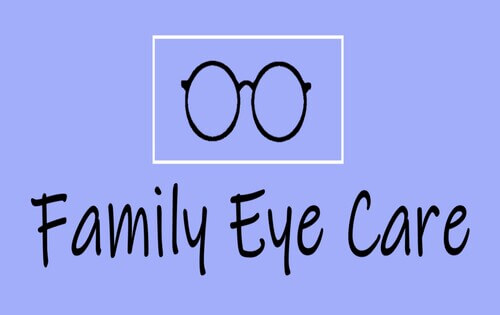Discover a Neurologist in Andalusia: Specialized Clinics and Care Providers
Wiki Article
The Pros and Cons of Different Refractive Surgical Treatments for Boosted Eyecare

LASIK Surgical Procedure
LASIK surgical procedure is a generally executed refractive procedure that intends to correct vision concerns such as farsightedness, astigmatism, and nearsightedness. This surgical technique has obtained appeal due to its efficiency in offering clients with clearer vision and lowering their dependence on glasses or call lenses. Throughout the treatment, a slim flap is developed on the cornea, and a laser is made use of to improve the underlying tissue, correcting the refractive error. The flap is then repositioned, permitting for fast recovery and very little pain for the client.One of the main benefits of LASIK surgical treatment is the fast improvement in vision experienced by many clients. It is necessary for people considering LASIK surgical treatment to undergo a complete analysis by an eye care specialist to figure out if they are ideal candidates for the treatment.
PRK Treatment
The PRK procedure, also understood as Photorefractive Keratectomy, is a type of refractive surgical treatment that intends to correct vision problems comparable to LASIK surgical treatment. Unlike LASIK, which entails producing a flap in the cornea, PRK works on the surface layer of the cornea.Among the benefits of PRK over LASIK is that it gets rid of the threat of flap-related issues given that no flap is developed during the surgical treatment. This can be valuable for individuals with thin corneas or those entailed in call sporting activities where eye trauma is an opportunity. The healing time for PRK is typically longer compared to LASIK, as the outer layer of the cornea requires time to regenerate after the procedure. Despite the longer healing duration, PRK can be an appropriate alternative for individuals seeking vision modification surgical treatment.
SMILE Surgery
A cutting-edge refractive surgery method getting appeal in the field of ophthalmology is SMILE Surgical procedure. Small Cut Lenticule Extraction (SMILE) is a minimally intrusive procedure that deals with vision by improving the cornea utilizing a femtosecond laser. Unlike conventional LASIK surgical treatment, SMILE Surgical treatment includes developing a little laceration in the cornea to remove a lenticule, which leads to much less disruption to the corneal structure and potentially faster recuperation times.Among the primary benefits of SMILE Surgical procedure is its capability to deal with nearsightedness (nearsightedness) and astigmatism with high accuracy, leading to outstanding visual results for individuals. The minimally invasive nature of the treatment additionally minimizes the danger of problems such as completely dry eye disorder, making it a favorable option for individuals looking for refractive surgery.

LASEK Method
Having checked out the advantages and factors to go to the website consider of SMILE Surgical treatment, an additional significant refractive surgical treatment method worth examining is the LASEK Method. LASEK, which stands for Laser-Assisted Subepithelial Keratectomy, is a type of laser eye surgical treatment that intends to remedy refractive mistakes such as nearsightedness (nearsightedness), hyperopia (farsightedness), and astigmatism.Unlike LASIK, LASEK does not involve producing a corneal flap. Instead, throughout a LASEK treatment, the specialist makes use of a watered down alcohol option to loosen the thin outer layer of the cornea, referred to as the epithelium. This layer is then carefully moved apart to enable the laser to reshape the underlying corneal tissue. As soon as the cornea has been improved to the desired level, the epithelial layer is repositioned.
One of the key advantages of LASEK is that it can be appropriate for people with thin corneas that may not be good candidates for LASIK. In addition, LASEK typically leads to marginal post-operative discomfort and a quicker recovery time contrasted to PRK. The aesthetic recuperation process with LASEK might be somewhat longer additional hints than with LASIK.
Implantable Get In Touch With Lenses
Implantable Call Lenses supply a lasting vision adjustment remedy for individuals looking for an option to traditional get in touch with lenses or glasses. These lenses, also referred to as phakic intraocular lenses, are surgically put right into the eye to remedy refractive mistakes such as myopia (nearsightedness), hyperopia (farsightedness), and astigmatism. eye center andalusia. Unlike standard get in touch with lenses that rest on the surface of the eye, implantable contact lenses function within the eye itself, providing clear vision without the need for everyday maintenance or removal
One of the key benefits of implantable call lenses is their durability. As soon as inserted, they can continue to be in the eye forever, offering constant and steady vision correction. In addition, these lenses can be an exceptional alternative for people that are bad prospects for laser eye surgery or who choose a reversible vision adjustment treatment.
However, implantable call lenses do carry some dangers, consisting of the possibility for cataracts or increased eye pressure. It is important for individuals considering this alternative to talk to an eye care expert to identify if implantable get in touch with lenses are the ideal selection for their particular needs and eye health and wellness.
Verdict
In final thought, each kind of refractive surgery has its very own advantages and drawbacks. LASIK surgical treatment is prominent for its fast recovery time, while PRK procedure might be ideal for individuals with slim corneas.
In General, this post SMILE Surgery provides a promising alternative for individuals looking to boost their vision with refractive surgical treatment.
Report this wiki page